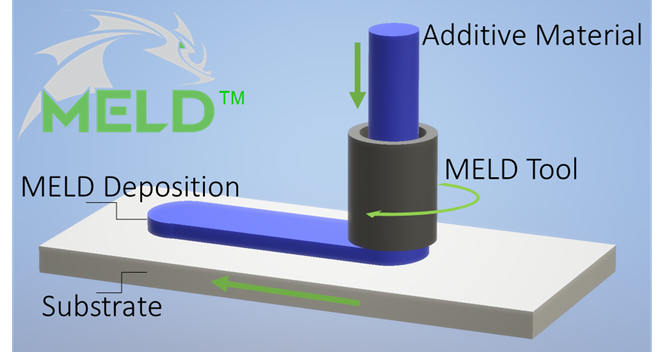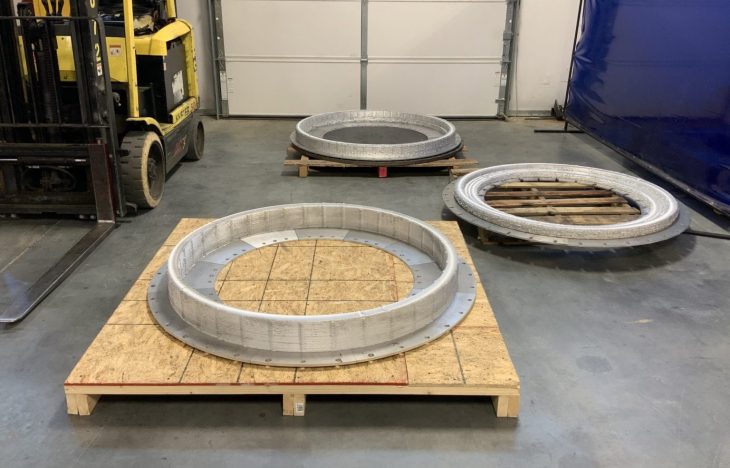Using its proprietary additive manufacturing technology, MELD Manufacturing Corporation has fabricated components in excess of 55 inches (1.4 m) in diameter using off-the-shelf aluminum 6061 — a milestone in the 3D-printing of large metal parts.
The MELD technology is a solid-state process, in which the material does not reach the melting temperature. In this way, it is said to produce high-quality materials and parts with low residual stresses and full density with significantly lower energy requirements than more conventional fusion-based processes. It also produces materials that are less susceptible to porosity, hot-cracking, or other common problems that plague melt-based technologies.
The technology is suitable to a number of applications, including additive manufacturing, coating applications, component repair, metal joining, and custom metal alloy and metal matrix composite billet and part fabrication. Implementation for additive manufacturing is particularly beneficial, as it can print large metal parts — providing a leap in scalability.

Unlike traditional additive processes, the MELD process is not restricted to small powder beds or costly vacuum systems. It is an open-atmosphere process and is not sensitive to the operating environment or material surface condition, making it an ideal candidate for real-world manufacturing. In addition, the technology in MELD is not limited in the kinds of aluminum and metal alloys that can be deposited.
The large aluminum components produced by MELD Manufacturing have solid walls, some over 4 inches (102 mm) thick — showcasing the advantages open-air, semi-solid 3D-printing. The uses of 6061 aluminum is also notable, because despite its widespread utilization in a number of industries, it is not compatible with other metal additive technologies. This demonstration shows that aluminum and metal additive manufacturing of large structures — typically produced using forgings — can now be 3D-printed on demand.
The company noted that the reduction in domestic U.S. aluminum mills and forges has created more demand than foreign capacity can supply. COVID-19 has further exacerbated delays globally.
“Prior to the pandemic our customer told us that these parts, printed in a few days at MELD, would have taken them up to two years to get from their supply chain. This global economic shutdown likely added 6 months or more to that two-year lead time estimate,” stated Dr. Chase Cox, director of Technology, MELD Manufacturing. “MELD represents an opportunity to re-establish domestic manufacturing capability at a critical time.”

